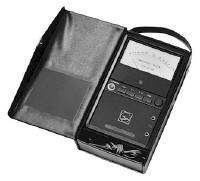100v Public Address Basics
Installing a PA System
Audio Principles & Theory
Miscellaneous
Public Address Information - 4
| 100V Line Public Address | |
| In designing a high impedance speaker system, there is no need to calculate the total impedance from the speaker impedance values, the way you would for a low impedance system. This is because in high impedance systems (i.e. 100 volt line systems), the load impedance rating is expressed in terms of the amount of power that would be delivered to it at the rated line voltage. The rating is given in Watts, which can simply be added to the other speakers to get the total power drawn by the load. Just add a little extra for headroom (see example below), and you know how much power is needed. |
|
| Commercial PA amplifiers operating on 100v outputs are normally connected with a speaker load less than the rated output power of the unit. For example, it is good practice to maintain a minimum of 10% or preferably 20% in reserve to accommodate future additional loudspeakers and avoid too much strain on the actual amplifier itself. As an example a 60 watt amplifier could be loaded as follows: | |
2 x 15 watt speakers = 30 watts 1 x 10 watt speaker = 10 watts 2 x 3 watt speakers = 6 watts Total load = 46 watts IT IS IMPORTANT THAT AMPLIFIERS ARE NOT DRIVEN WITH A GREATER LOAD THAN THEY ARE RATED! |
|
| Amplifier failure is a possibility if too many loudspeakers are connected to the output and their total load exceeds the amplifier rated output, sound quality at best will become low and distorted. If more speakers are required on an existing system and the present amplifier is pretty full, a slave power public address amplifier is required to drive the additional units. Add up your speaker wattage settings and adjust them if necessary to just below the amplifier rating. As a rule SPEAKERS COME SET TO THEIR MAXIMUM SETTINGS and often these want reducing prior to installation. Saving a few watts here and there always helps! As most commercial speakers come with adjustable wattage settings (multi-tapped transformer) it is possible to adjust a speaker to suit its location. More often than not, a speaker only needs a small amount of power in a quiet location such as an office and a moderate amount in a warehouse. Always try to keep back as much power as you can by keeping tappings as low as you can in order to do the job, then if you need to adjust one speaker “UP” there is headroom in the system to do it without problem. |
|
 |
An easy way of testing the speaker lines and whether you are within the acceptable limits of your amplifier is with an impedance meter. The TOA ZM-10A4 is an ideal tool for the job, click here to find out more information on the ZM-104A. |
  |
|



